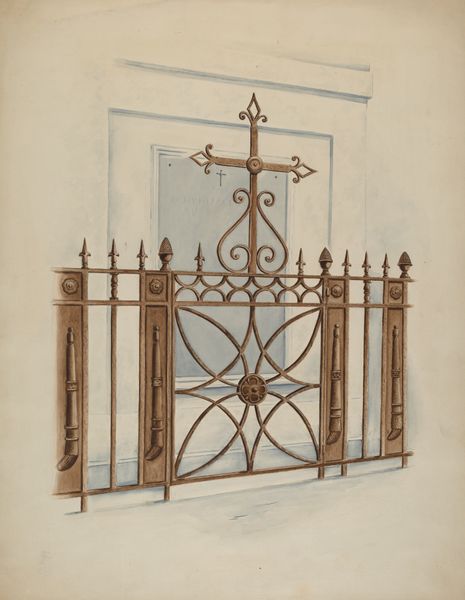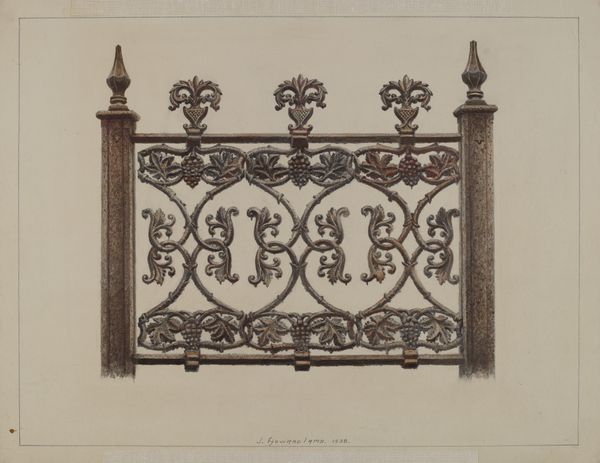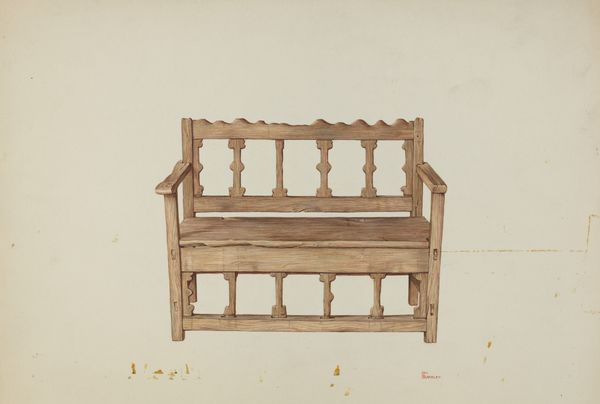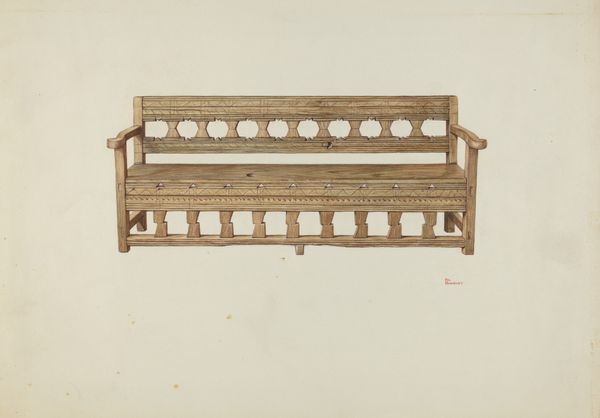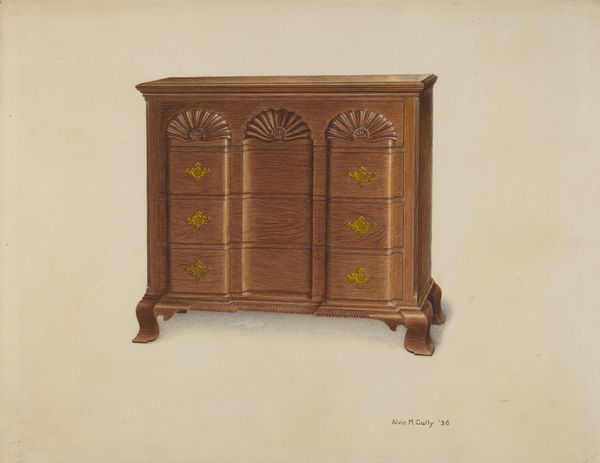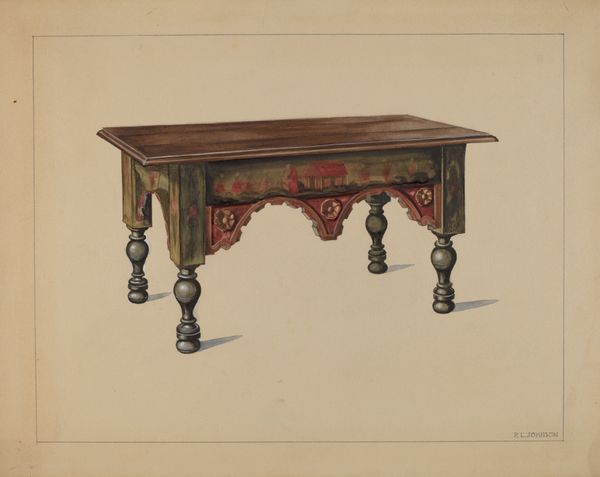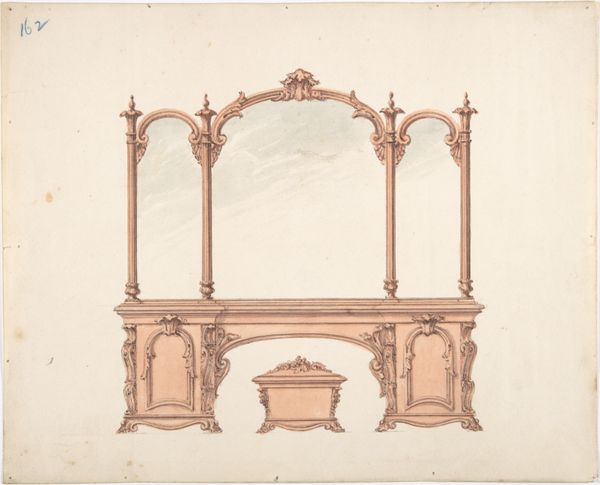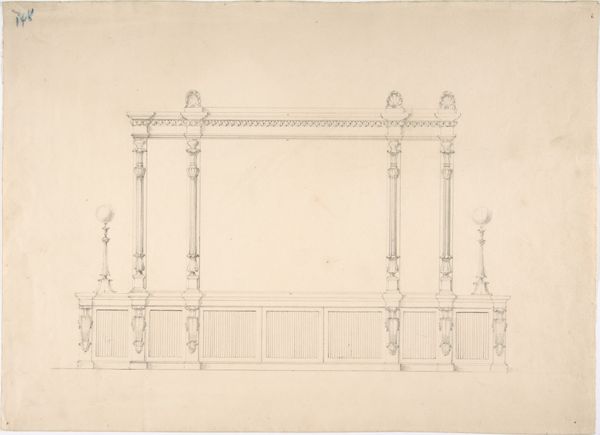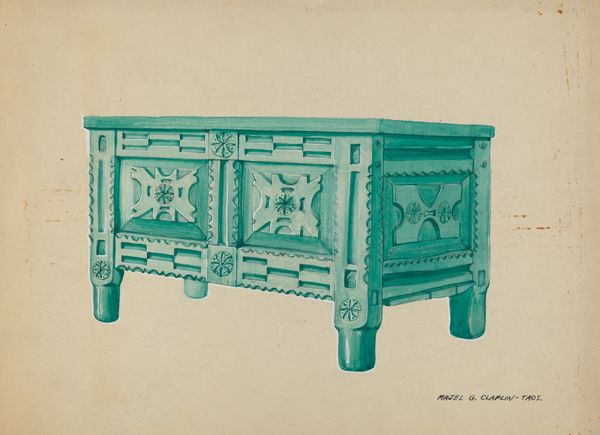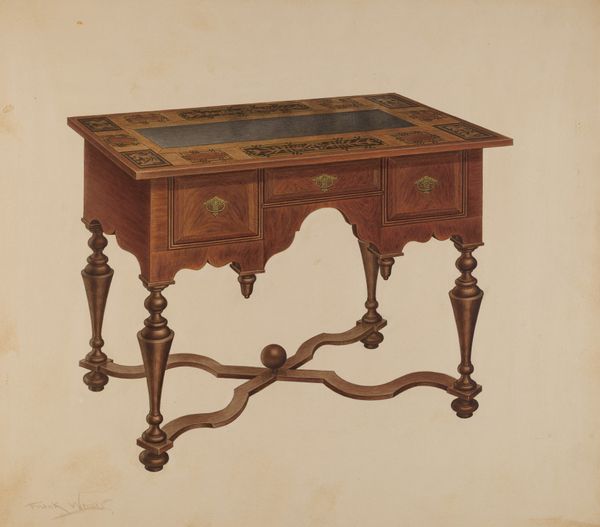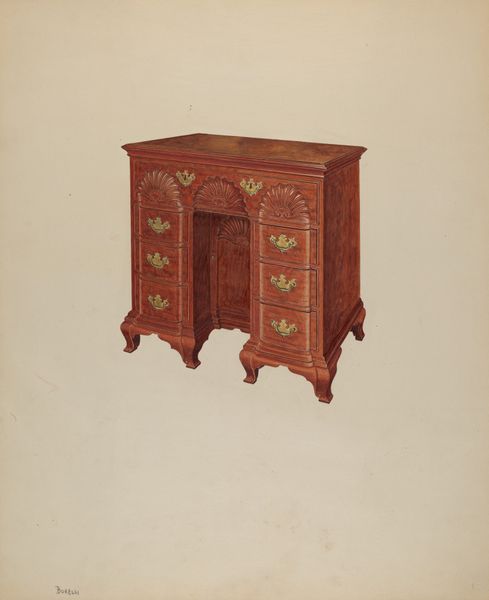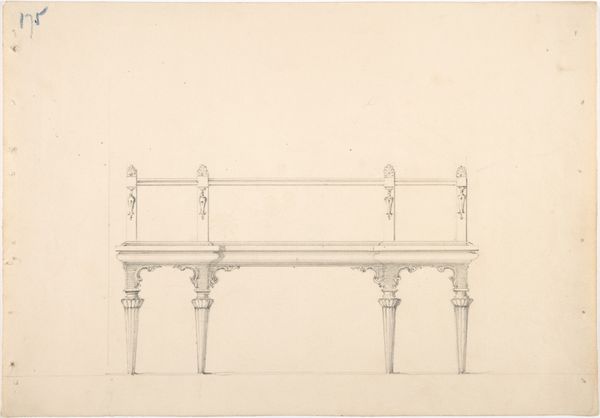
drawing, watercolor
#
drawing
#
landscape
#
watercolor
#
academic-art
Dimensions: overall: 28.1 x 35.5 cm (11 1/16 x 14 in.) Original IAD Object: Approximately 3' high
Copyright: National Gallery of Art: CC0 1.0
Curator: Let’s turn our attention to Hal Blakeley’s watercolor and drawing titled “Chancel Railing,” created in 1939. Editor: It evokes a sense of solemnity, almost confinement, with its perspective pushing us right up against this barrier. Curator: It is interesting how the barrier here invites further interpretations on concepts of division, or rather, inclusion. Knowing the historical context surrounding ecclesiastical architecture, we could argue Blakeley's railing design here is about regulating sacred space. It also reflects how such designs enforced social hierarchies in church settings. Editor: And how do we situate Blakeley within this landscape? Was he consciously engaging with those power dynamics? Curator: The architecture, and by extension the architectural designs, are rarely neutral. It is hard not to view a watercolor, in this case of church architecture, as an act of upholding the institutions, considering his designs are for their structural frameworks. Editor: Absolutely. This piece, although seemingly simple, carries the weight of religious institutions. I think one interesting facet of it is the use of a very specific style. It looks traditional at first glance, but on closer inspection, those soft watercolour washes bring an interesting juxtaposition of style and form. What were these railings designed to "protect", and whom were they meant to "protect" from, exactly? Curator: Indeed, that tension between form and function becomes so potent when you apply an understanding of who benefited from the social orders that this piece embodies. This brings to light how we must investigate who art and design traditions might have privileged. Editor: Ultimately, it makes us consider not just the aesthetic qualities, but the complex relationships of art with power, social order and even oppression. Curator: A perspective on our own positionality, its challenges and complicities!
Comments
No comments
Be the first to comment and join the conversation on the ultimate creative platform.
